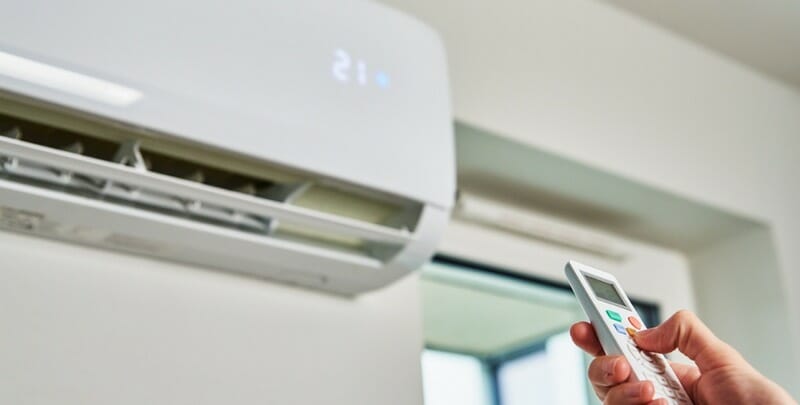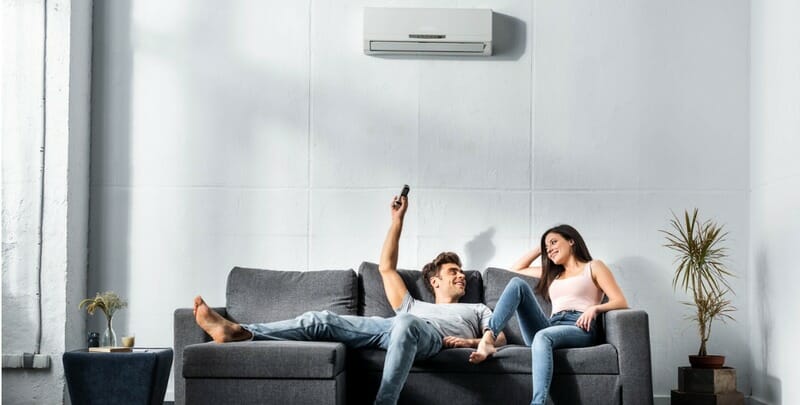
What Size Split System Do I Need?
When you want climate control in one or two rooms of your home, a split system air conditioner is an ideal choice. But before buying your air conditioner your next question has to be: What size split system do I need for my space?
Getting the size of the split system right is crucial. A unit that is too big for an area will waste power, while a unit that is too small for the room size will struggle to heat or cool your room and also add to your power bills.
Everyone’s situation is different, so let’s examine what split systems are, how they work and how to choose the right size unit for your home space.
Small vs Large Split System Air Conditioners
A split system air conditioner is a heating and cooling unit that has an internal unit and an external unit. The outdoor part is also known as the condenser or compressor, while the internal section is the wall-mounted unit that delivers the heated or cooled air.
When thinking about the size of the split system air conditioner you need, the reference is to the power of the unit, not its actual size. The power of split system air conditioners is measured in kilowatts (kW).
To calculate what size split system air conditioner, you need is a matter of measuring the space (or spaces) you plan to heat or cool.
The first step is to measure the floor space you are going to be heating or cooling. Measure the length and width and then multiply them to get square metres (m²). For example, if your area is 5m x 6m, the result will be 30m².
After measuring the floor space in square metres, the next step is to measure the ceiling height of the room. The watts (unit of power) will vary depending on the ceiling height of the room. Take your figures to a heating and cooling professional who can then accurately calculate the power you need.
You can also use the following rough guide:
- 20m² or smaller (room size) – 2-2.5kW
- 20-40m² – 2.5-5kW
- 40-60m² – 4-6kW
- 60m² or bigger – 5-9kW
If you want to cool or heat more than one area (such as an open kitchen near the main living space), you have to add that extra space onto your calculations. When it comes to heating or cooling multiple rooms it would be better to get a second indoor unit and hook it up to the outside compressor.
Don’t forget that well-insulated rooms take less power to heat and cool and will retain your desired temperature for longer.

Why Does the Size of Split System Matter?
The air conditioner size matters a lot, and here’s why: getting the right size ensures that your system runs efficiently and keeps your home comfortable.
First, if your split system air conditioning unit is too small, it won’t be able to cool or heat your space effectively. It will have to work harder and run longer, which not only consumes more energy but also wears out the unit faster. The heating and cooling capacity will also be reduced. You’ll find it struggling to maintain the desired temperature, leading to discomfort.
On the other hand, if your split system is too big, it will cool or heat your room quickly, but it won’t run long enough to properly dehumidify the air. An oversized air conditioner can leave you with a damp, clammy feeling indoors, and it’s not good for your indoor air quality either.
So, finding the right size split system is like Goldilocks finding the perfect porridge – it needs to be just right.
A professional heating, ventilation and air conditioning (HVAC) technician can help you determine the ideal size for split systems, matching them with your home based on factors like square footage, insulation, and climate.
Investing in the right air conditioner size not only saves you money on energy bills but also ensures you enjoy a consistently comfortable living environment.
Where Do I Install My Split System?
When you’re considering where to place your indoor wall-mounted unit (or units), the best position is high on the wall so cool air can flow downwards, which helps with the efficiency of the system.
The outdoor unit should ideally be located on a north or south facing wall, so it never faces the sun. If the unit does face the sun it is forced to work harder in summer, reducing its energy efficiency.
Take into account windows and doors when positioning your indoor unit, because cold draughts, warm air and sunlight will have an impact on your heating and cooling.
The Advantages of Split System Air Conditioning
While there are a number of choices in heating and cooling systems, there are many good reasons why split system air conditioning is the most popular choice for Australian homes.
Most households only need one or two living spaces heated and cooled, making a split system air conditioning system ideal.
Split system air conditioners are versatile and have a number of other advantages, including:
- Heating and cooling – a split system reverse cycle air conditioner is effective in any season.
- Easy to maintain – with one outer unit and one or more indoor units, a split system doesn’t have a lot of working parts and is easy to maintain.
- Heat or cool more than one room – Multi-head split systems allow for several internal units in different rooms to be connected to the one compressor and they can all run independently.
- It can power a ducted system – a split system can be hooked up with ducted heating and cooling if desired.
- Cost effective to install – unlike various other systems, a split system air conditioning unit doesn’t have high upfront costs.
- Suited to any home – a split system air conditioner can be installed in virtually any kind of home, unlike some other kinds of systems.
- Energy efficient – Split systems use less electricity than other climate control options, reducing your running costs.
- Improves air quality – Split system air conditioning filters the air and removes harmful contaminants and allergens.

Making the Right Choice
So, what size split system do you need? When you know the size of the space and number of the areas you want to heat or cool, you can choose the right size air conditioner for your home.
Speak with a heating and cooling specialist from Metropolitan Air Conditioning to work out the correct split system power for your space and arrange for professional installation.
Please note: This information is provided for advice purposes only. Regulations differ from state to state, so please consult your local authorities or an industry professional before proceeding with any work. See our Terms & Conditions here.
Published: 2022-10-13

































